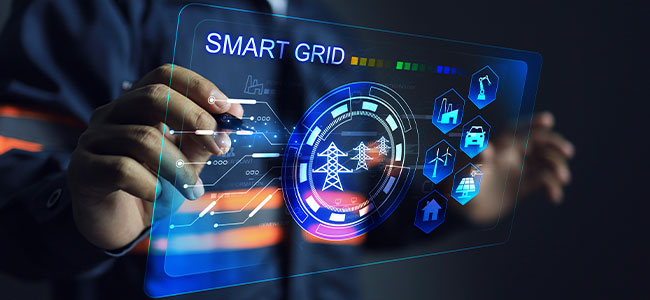
The Role of Smart Grids in Enhancing Electrical Safety
How smart grids and IoT technology help prevent electrical incidents and improve safety in the workplace.
- By Herbert Post
- May 01, 2024
One of the expectations that industries have with the fast-paced development and application of smart grids and Internet of Things (IoT) technologies is how these will help in improving electrical safety in the workplace. Smart grid technology, for instance, considering its advanced capability to monitor and manage the distribution of electricity across different networks, has changed the way we understand energy flow and safety. Partner that with IoT that allows for the connection of everyday devices through the internet, these systems offer advanced supervision and control over electrical infrastructures.
For the electrical industry wherein safety is a crucial concern, these technological advancements are expected to also address the issue of workforce safety. Electrical incidents can result in significant risks such as severe injury, downtime, and worse, loss of life. In this article, we will explore how smart grids and IoT technology can help prevent electrical incidents and ultimately improve workplace safety.
Understanding Smart Grids and IoT
Smart grids work by combining electrical infrastructures with digital technology in order to monitor and manage the flow of electricity from different sources to consumers. Key components of this technology may include smart meters that provide real-time data on the use of electricity, and automated control systems that work to adjust and distribute electrical power to the consumers in the most efficient way possible. Aside from increasing the reliability of electricity distribution, the use of these digital components improves safety by identifying and responding to potential electrical faults before they can cause any harm.
Add IoT technology to the digital framework of smart grids and it will result in an even greater level of control and monitoring. Implementing IoT devices in an electrical system can range from using sensors to detect overheating in equipment to circuit breakers that can be remotely controlled to prevent any incidents. In other words, implementing IoT technology in electrical systems enables a more interactive network that can help prevent accidents and improve workplace safety.
Integrating both smart grids and IoT offers a proactive approach to electrical safety. But how do these technologies really work in improving electrical safety at work?
Predictive Analytics in Smart Grids
Smart grids use predictive analytics to predict and mitigate potential electrical faults and overloads. Through the integration of AI and machine learning algorithms, smart grids are able to process and analyze vast amounts of data from smart meters and sensors throughout the grid. These data often include equipment status, real-time electricity consumption patterns, and even weather conditions. By processing these data, smart grids can forecast any potential electrical issue, like overloads or equipment failures, before they become real safety hazards, enabling preventive measures to be taken.
This article originally appeared in the April/May 2024 issue of Occupational Health & Safety.